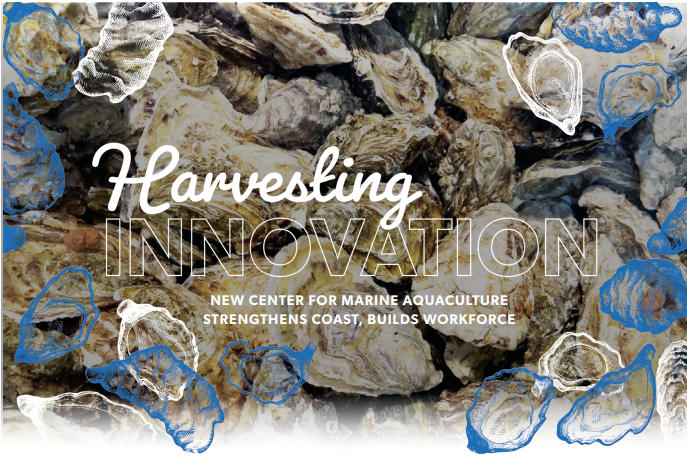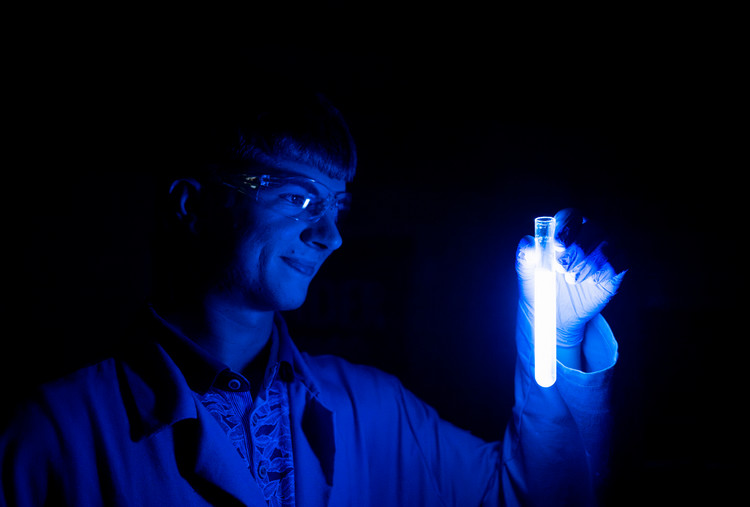Island University Scientist Leads Ocean Acidification Study in the Gulf
CORPUS CHRISTI, Texas – As oceans become more acidic, the need to carefully monitor the chemistry of ocean waters becomes more urgent. One of the first challenges in dealing with this change is finding out how and where to best monitor seawater to give researchers the best data to analyze.
Ocean acidification is a key focus for Dr. Xinping Hu, Associate Professor in the Department of Physical & Environmental Sciences in the College of Science and Engineering at Texas A&M University-Corpus Christi. One of Hu’s projects, which seeks out the best places and ways to monitor ocean acidification in the Gulf, is being supported by the National Oceanic and Atmospheric Administration (NOAA).
“People have studied ocean acidification in other areas extensively,” Hu said. “However, the Gulf is one area that we don’t know a whole lot about.”
Why is this a concern? While the change has resulted in many negative impacts, perhaps the most compelling answer is the more acidic the water, the more harmful it is to coral reefs and animals with shells, like oysters and clams, because the acid breaks down calcium carbonate, the main component of shells and reefs.
Acidification also affects the economy. The Gulf supports significant recreational and commercial fishery activities, including a seafood industry with close to $22 billion in total sales, supporting more than 150,000 jobs. In addition, recreational fishing activities in the Gulf support some 112,000 jobs, and total trips and durable good expenditures involved in recreational fishing is around $11 billion, according to the National Marine Fisheries Service.
Acid levels are rising because the ocean absorbs carbon dioxide from the atmosphere. Hu said the level of carbon dioxide in the atmosphere has increased due to the burning of fossil fuels, deforestation, and cement production over the past 250 years. Other factors leading to acidification may include nutrient input – fertilizers that have washed into the ocean from agricultural lands – and upwelling from deeper areas where an increase in deepwater organisms produces an increase in respiration and carbon dioxide.
In the cooler water of northern latitudes of the earth, ocean acidification is already a serious problem, but little detail is known about acid levels in the relatively warm Gulf.
“We don’t have this problem yet, but if things keep going in this direction, that’s something that’s on the horizon,” Hu said.
Hu already had been studying acidification at the Flower Garden Banks National Marine Sanctuary, starting in late 2013. The sanctuary, about 100 miles southeast of Galveston, is the site of the northernmost tropical corals in the Gulf.
Hu submitted a proposal last year that is among four projects supported by NOAA nationwide related to the observation and modeling of ocean acidification, at the University of California Santa Cruz, Rutgers University, the University of Connecticut, and Texas A&M-Corpus Christi. Total funding for all projects is about $5 million. The Texas A&M-Corpus Christi group is now in the planning stages for what will be a focused look at ocean acidification in the Northwestern Gulf, which will include the Flower Garden Banks sanctuary.
A Texas A&M University-owned robotic Wave Glider will measure and report conditions at the surface in real time. Dr. Steven DiMarco, Professor of Physical Oceanography at Texas A&M, a specialist in ocean monitoring, will lead this effort as well as manage vessel deployments. Also, two sensors will be placed on the seabed at a Flower Garden Banks location to measure the pH level and carbon dioxide levels about 20 meters under the surface.
Hu will lead the project. In addition to DiMarco, key team members and their functions include Dr. Leticia Barbero, of NOAA’s Atlantic Oceanographic and Meteorological Laboratory, data integration; Dr. Rob Hetland, Professor of Physical Oceanography at Texas A&M University, physical modeling; Dr. Lei Jin, Associate Professor of Math & Statistics at A&M-Corpus Christi, statistical modeling; and Felimon Gayanilo, Enterprise IT Technologist at the Harte Research Institute for Gulf Studies, data archiving and storage into the Gulf Coastal Observing System. Several Islander Ph.D. students will be involved.
“It’s the right time and this is the right team to do this,” Hu said.
Hu said planning will continue through early 2020 with first monitoring activities to begin in spring 2020.










